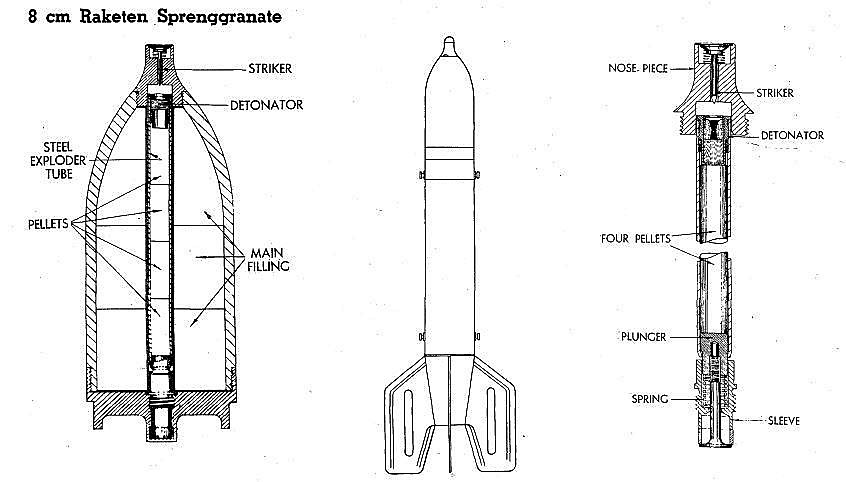8 Cm Raketen-Vielfachwerfer on:
[Wikipedia]
[Google]
[Amazon]
The ''8 cm Raketen-Vielfachwerfer'' was a German rocket launcher of the Second World War. The launcher was a near-copy of the

File:Bundesarchiv Bild 101I-300-1863-30, Riva-Bella, Waffenvorführung Panzerwerfer.jpg, A weapons demonstration of a 24-round 8 cm Raketen-Vielfachwerfer on an armoured SOUMA MCL half-track. Located in Northern France, Atlantic Coast, Riva Bella, 30 May 1944.
File:Bundesarchiv Bild 101I-300-1863-33A, Riva-Bella, Waffenvorführung Panzerwerfer, Rommel.jpg, A collection of German officers including Generalfeldmarschall
Soviet
The Union of Soviet Socialist Republics. (USSR), commonly known as the Soviet Union, was a List of former transcontinental countries#Since 1700, transcontinental country that spanned much of Eurasia from 1922 until Dissolution of the Soviet ...
BM-8 Katyusha
Katyusha () is a diminutive of the Russian name Ekaterina or Yekaterina, the Russian form of Katherine
Katherine (), also spelled Catherine and Catherina, other variations, is a feminine given name. The name and its variants are popular in c ...
rocket launcher produced under the influence of the Waffen SS
The (; ) was the combat branch of the Nazi Party's paramilitary ''Schutzstaffel'' (SS) organisation. Its formations included men from Nazi Germany, along with volunteers and conscripts from both German-occupied Europe and unoccupied lands. ...
.
History
The Soviet BM-8 Katyusha rocket launchers first encountered duringOperation Barbarossa
Operation Barbarossa was the invasion of the Soviet Union by Nazi Germany and several of its European Axis allies starting on Sunday, 22 June 1941, during World War II. More than 3.8 million Axis troops invaded the western Soviet Union along ...
left a big impression on the invading Germans. Proposals to copy the Katyusha for German use were soon made but there wasn't much spare industrial capacity available for new projects. There also wasn't a great deal of enthusiasm for the project because the German Army
The German Army (, 'army') is the land component of the armed forces of Federal Republic of Germany, Germany. The present-day German Army was founded in 1955 as part of the newly formed West German together with the German Navy, ''Marine'' (G ...
had already committed to the production of spin-stabilized rocket systems such as the 15 cm ''Nebelwerfer'' 41.
Since the Waffen-SS was the military wing of the Nazi Party
The Nazi Party, officially the National Socialist German Workers' Party ( or NSDAP), was a far-right politics, far-right political party in Germany active between 1920 and 1945 that created and supported the ideology of Nazism. Its precursor ...
it was often in competition with the German armed forces (''Wehrmacht
The ''Wehrmacht'' (, ) were the unified armed forces of Nazi Germany from 1935 to 1945. It consisted of the German Army (1935–1945), ''Heer'' (army), the ''Kriegsmarine'' (navy) and the ''Luftwaffe'' (air force). The designation "''Wehrmac ...
'') for resources. The Waffen-SS often used its political influence to create its own network of suppliers outside the influence of the ''Wehrmacht'' to supply its troops. A product of this competition for resources was the 8 cm Raketen-Vielfachwerfer which was almost a direct copy of the BM-8 and often armed Waffen-SS units.
Design
The launcher consisted of two rows of parallel perforated steel rails which the rockets were mounted on. The launch rails could launch either German or captured Russian rockets. The rails were then mounted on tubular steel frames on a variety of vehicles. Two of the most common mounts were an armored SOMUA MCL (German designation ''Raketenwerfer S303 (f) auf SOMUA MCL'') a French half-track artillery tractor modified byAlfred Becker
Alfred Becker (20 August 1899 – 26 December 1981) was a German engineer and artillery officer who served during the First and Second World Wars. During the Second World War he took captured British and French vehicles and refurbished and reb ...
for use by the Wehrmacht or a German Sd.Kfz. 4 half-track truck.
The rocket - the 8 cm ''Raketen Sprenggranate'' - was a simple cordite
Cordite is a family of smokeless propellants developed and produced in Britain since 1889 to replace black powder as a military firearm propellant. Like modern gunpowder, cordite is classified as a low explosive because of its slow burni ...
fueled, fin-stabilized, diameter, high-explosive rocket patterned closely on the Russian M-8. The body was simple and inexpensive to produce due to the use of stamped sheet metal components, unlike the more expensive machined venturis used by spin-stabilized rockets. The fins of the 8 cm ''Raketen Sprenggranate'' differed from the M-8 and were mounted at 2° to impart spin to improve accuracy.
Comparison

Photo Gallery
Erwin Rommel
Johannes Erwin Eugen Rommel (; 15 November 1891 – 14 October 1944), popularly known as The Desert Fox (, ), was a German '' Generalfeldmarschall'' (field marshal) during World War II. He served in the ''Wehrmacht'' (armed forces) of ...
at Riva Bella 30 May 1944.
File:Bundesarchiv Bild 101I-300-1863-35, Riva-Bella, Waffenvorführung Panzerwerfer, Rommel.jpg
File:Bundesarchiv Bild 101I-300-1863-07, Riva-Bella, Panzerwerfer, Einschläge.jpg, Shell splashes in the waters off Riva Bella (Sword Beach
Sword, commonly known as Sword Beach, was the code name given to one of the five main landing areas along the Normandy coast during the initial assault phase, Operation Neptune, of Operation Overlord. The Allied invasion of German-occupied Fra ...
), May 30, 1944.
Notes
References
* * Chamberlain, Peter (1975). Mortars and Rockets. Gander, Terry. New York: Arco Pub. Co. * Spielberger, Walter (1989). Die Halbketten-Vehicles des deutschen Heeres 1909–1945. Motorbuch Verlag.External links
* {{DEFAULTSORT:8 cm Rakaten-Vielfachwerfer Rocket artillery World War II artillery of Germany Weapons and ammunition introduced in 1943